Ruby-throated hummingbirds returning to SC for spring 2024! Here’s when to put out your feeders
With the recent spring-like temperatures in South Carolina this year, floral blooms are in abundance, buzzing bumblebees, birds chirping and pollen blanketing every inch of the outdoors.
Along with the recent transitions with the neighboring flora and increase in wildlife activity, it’s finally time for ruby-throated hummingbirds to begin their spring migrations and make their way back to South Carolina.
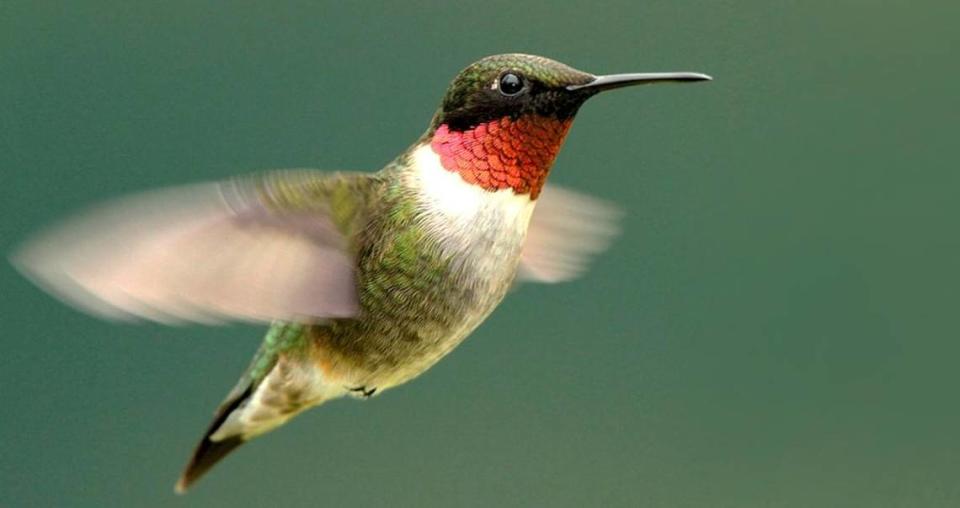
These hummingbirds will usually arrive in the Palmetto State in mid-March, so mark your calendars. It’s time to start putting out your feeders.
For the hummingbird’s safety, it’s best to make your own nectar to place inside the feeders rather than using the store-bought brands.
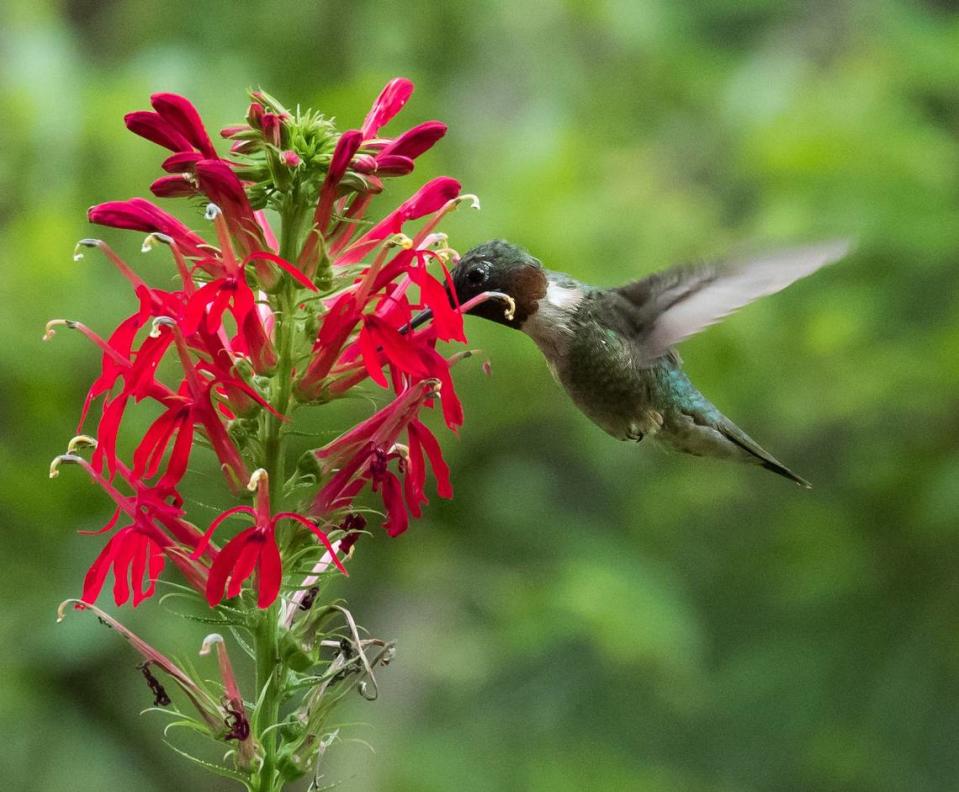
Although convenient, these can be expensive and contain preservatives and additives that are unnecessary and could potentially be hazardous.
Making your own nectar can be easy and only requires mixing one part sugar with four parts water, meaning 1 cup of refined, white sugar with 4 cups of water, until the sugar is dissolved. Boiling the water is not necessary, but you do want to make sure the sugar is completely dissolved, the Clemson Cooperative Extension Home & Garden Information Center states. Never use any other type of sugar, sugar substitute or artificial sweetener.
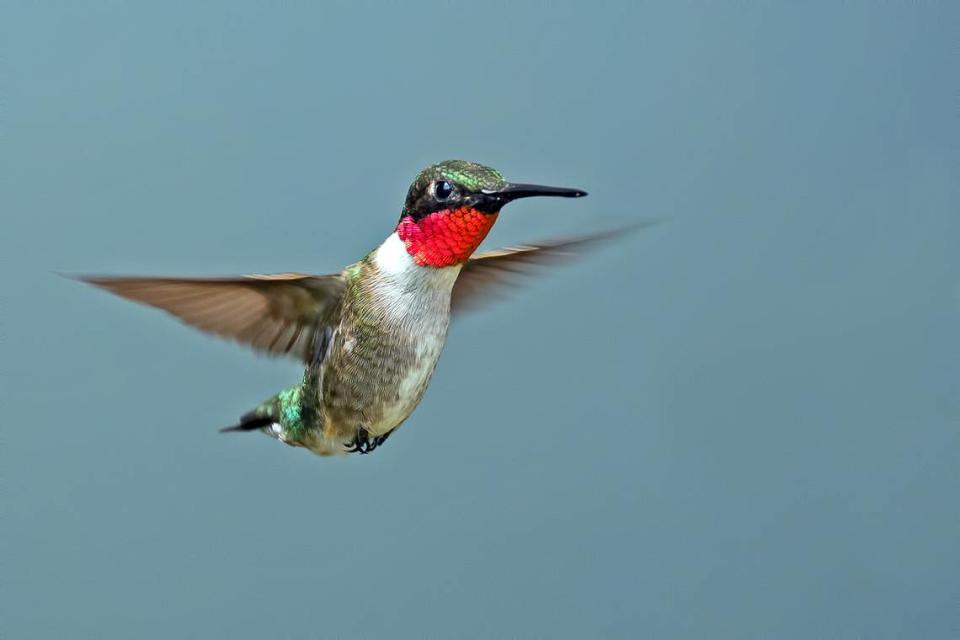
It is important to not add red dye or food coloring to the sugar water nectar solution, as it may harm the hummingbirds and natural nectar is a clear solution.
However, red-colored feeders will do wonders at attracting your tiny, quick-flying friends.
Hummingbirds are attracted to the color red and other brightly colored objects as they have learned to associate high-quality nectar with red flowers, detailed The National Audubon Society.
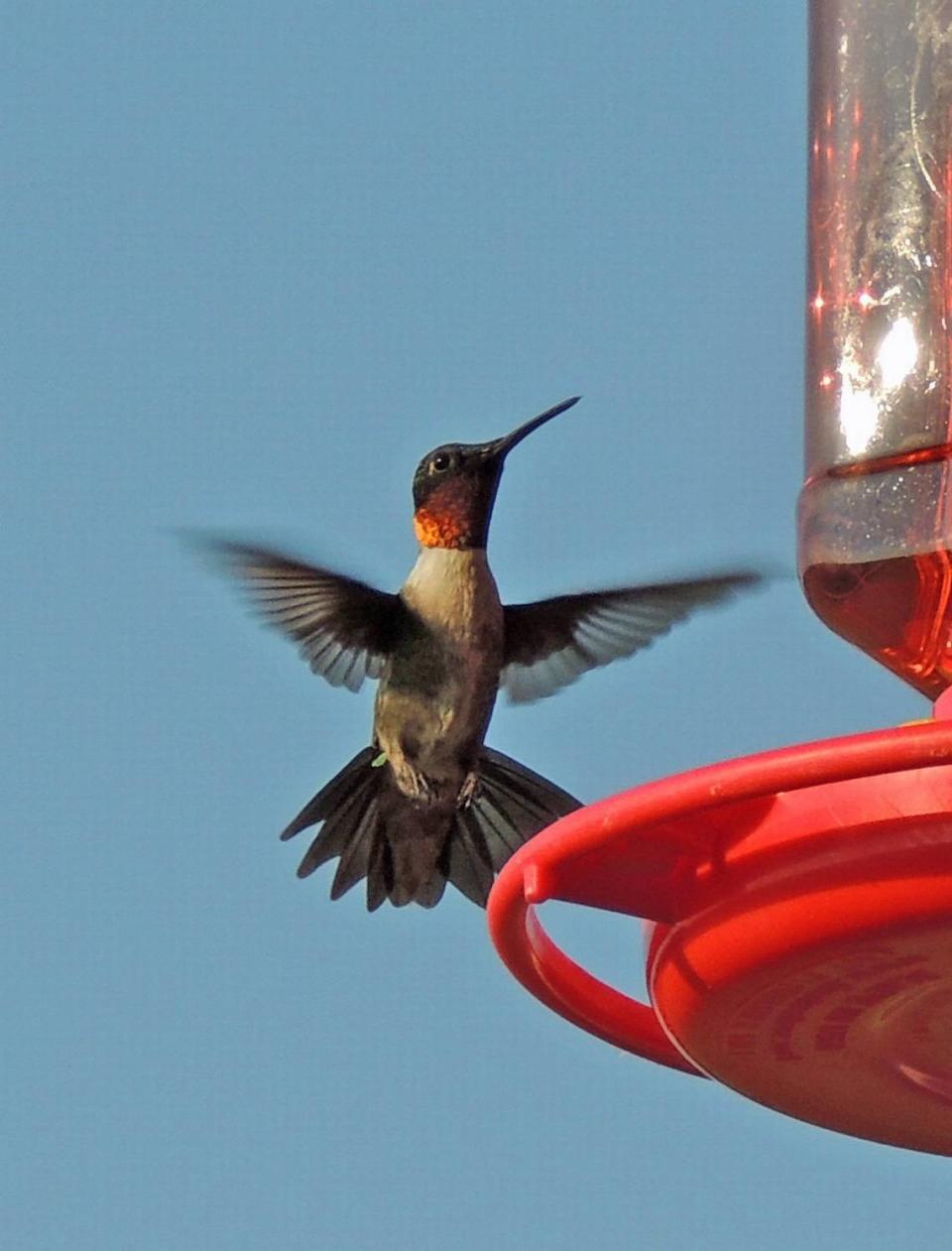
Feeders and nectar do need to be changed rather regularly for those who actively like to leave feeders out to attract the hummingbirds to their yard.
If the weather is cooler, around 60 degrees Fahrenheit, then leaving the nectar for two or three days is acceptable and won’t be detrimental to a hummingbird’s health. However, on a warmer day, such as a 90-degree Fahrenheit day, the spoilage possibility would require you to change the nectar after just one day, according to Wild Birds Unlimited.
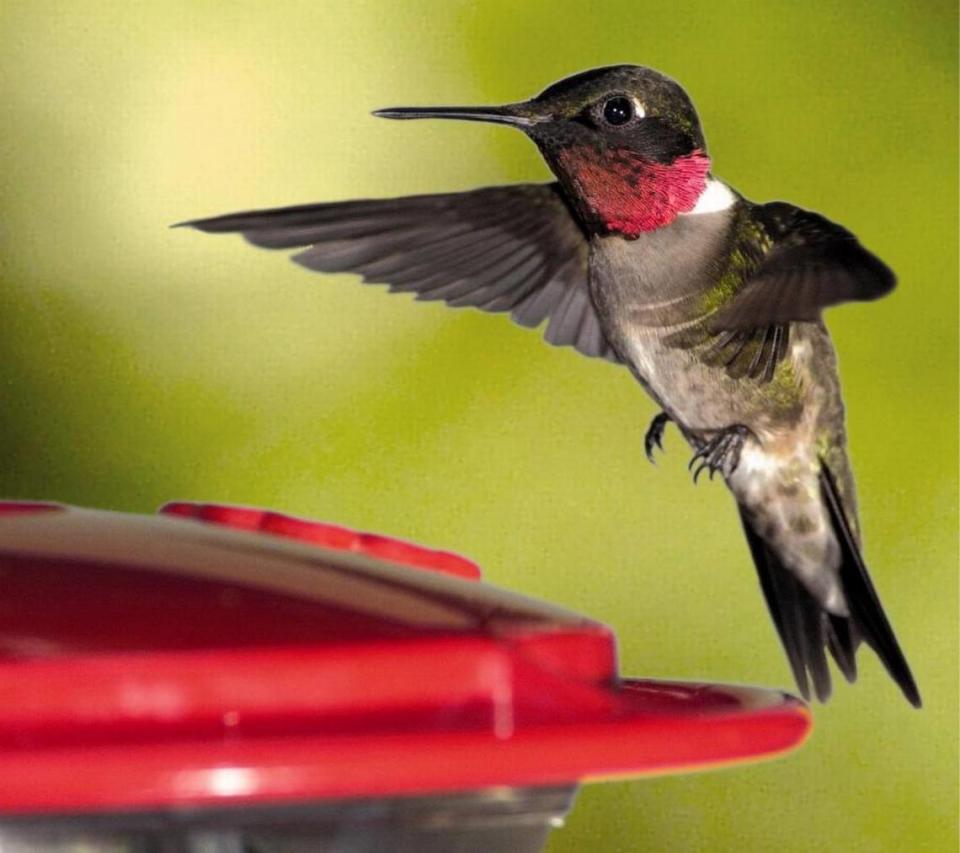
For cleaning, you may rinse your feeder out with hot water and clean the feeding ports thoroughly with a brush to prevent a build-up of mold.
To avoid attracting bees, remember to fill the nectar level lower than you might assume so the bees can’t reach it through the ports in a tray-style feeder. Sometimes this is about halfway full, Wild Birds Unlimited states.
The tiny, fast-flying ruby-throated hummingbirds are frequently seen around the Palmetto State and have become favorites to many.
When you get a chance to spot one, the males of this species will stand out the most.
Males will display a bright red throat, hence the name ruby-throated, as well as a black chin. The top of their heads and backs will show a brightly colored iridescent green.
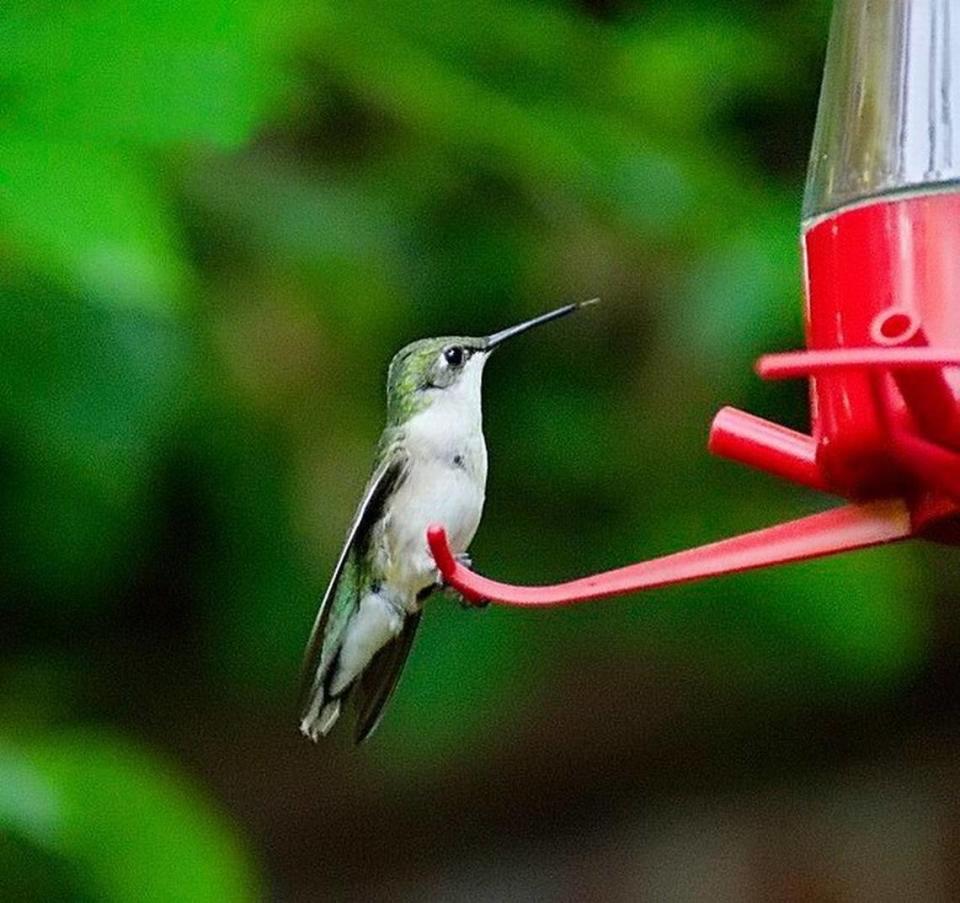
Meanwhile, females will display overall duller colors than their male counterparts. Their chins and throats are white with pale green streaks and their faces lack the black chins and distinguishing red throats of the males. This can make it more difficult to determine their species. In addition, the female’s belly is primarily white with buffy flanks, and the back is green, according to Bird Watching HQ.
If you wish to spot these tiny hummingbirds in your own yard, without the maintenance of a feeder, opting to plant flowers may be your best bet.
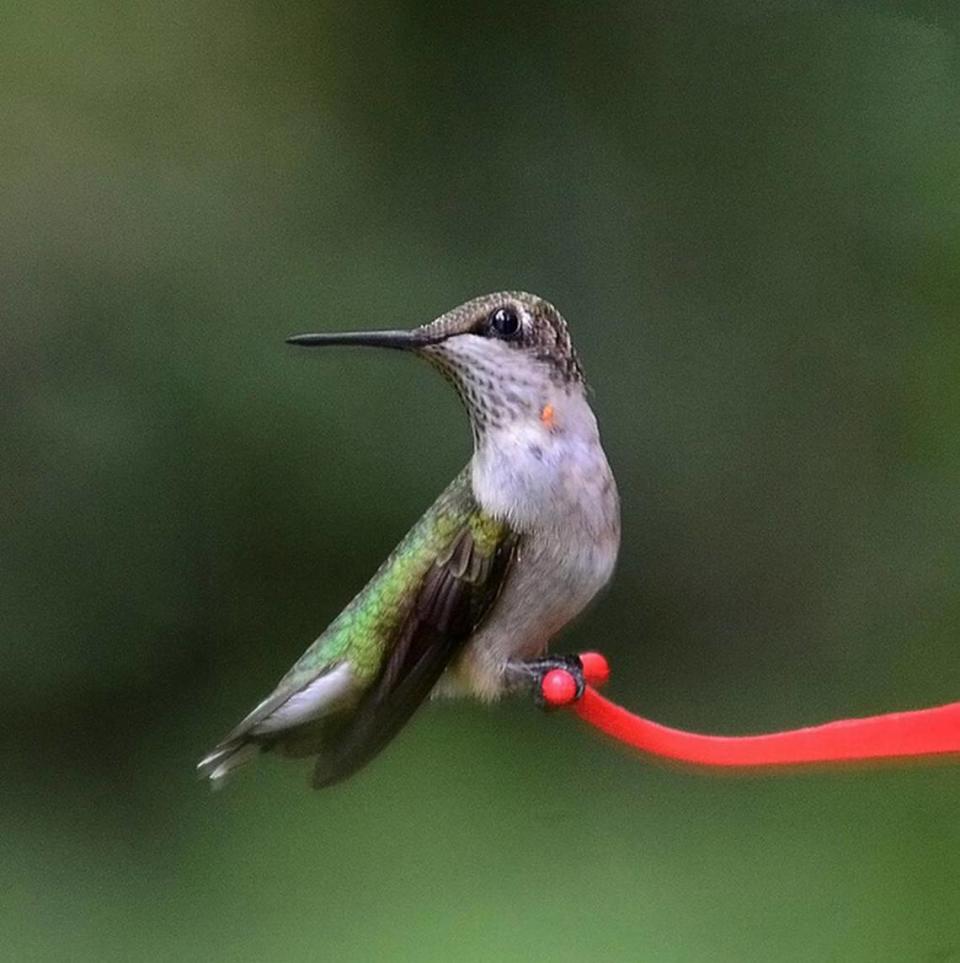
When selecting a flower, there are certain characteristics that will be important to keep in mind.
Select a flower that is known to produce ample amounts of nectar.
Choose a tubular-shaped flower that will not allow other pollinators, like bees and butterflies, to access the nectar.
Choose a flower that is native to South Carolina.
The color red will be your best bet as hummingbirds are most attracted to red flowers.
According to Bird Watching HQ, these are the 24 best types of hummingbird flowers in South Carolina.
Trumpet Vine/Trumpet Creeper (Campsis radicans)
Trumpet Honeysuckle (Lonicera sempervirens)
Red Cardinal Flower (Lobelia cardinalis)
Bee Balm (Monarda)
Sage (Salvia) (Salvia spp)
Rhododendron (Rhododendron catawbiense)
Lupine (Lupinus)
Columbine (Aquilegia)
Lily (Lilium canadense) and (Lilium columbianum)
Indian Pink/Woodland Pinkroot (Spigelia marilandica)
Azalea (Azalea)
Red Buckeye (Aesculus pavia)
Mountain Laurel (Kalmia latifolia)
Coral Bells (Heuchera)
Beard Tongues (Penstemon)
New Jersey Tea (Ceanothus americanus)
Dense Blazing Star (Liatris spicata)
Phlox (Phlox)
Zinnia (Zinnia)
Petunia (Petunia)
Impatiens (Impatiens)
Orange Jewelweed (Impatiens capensis)
Flowering Tobacco (Nicotiana tabacum)
Rose of Sharon (Hibiscus syriacus)

